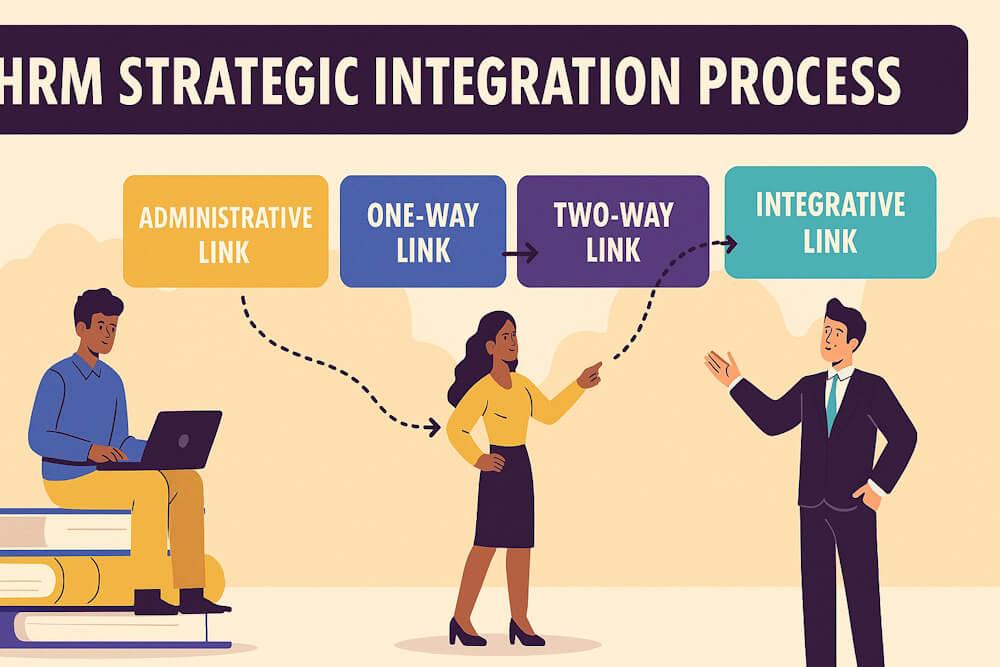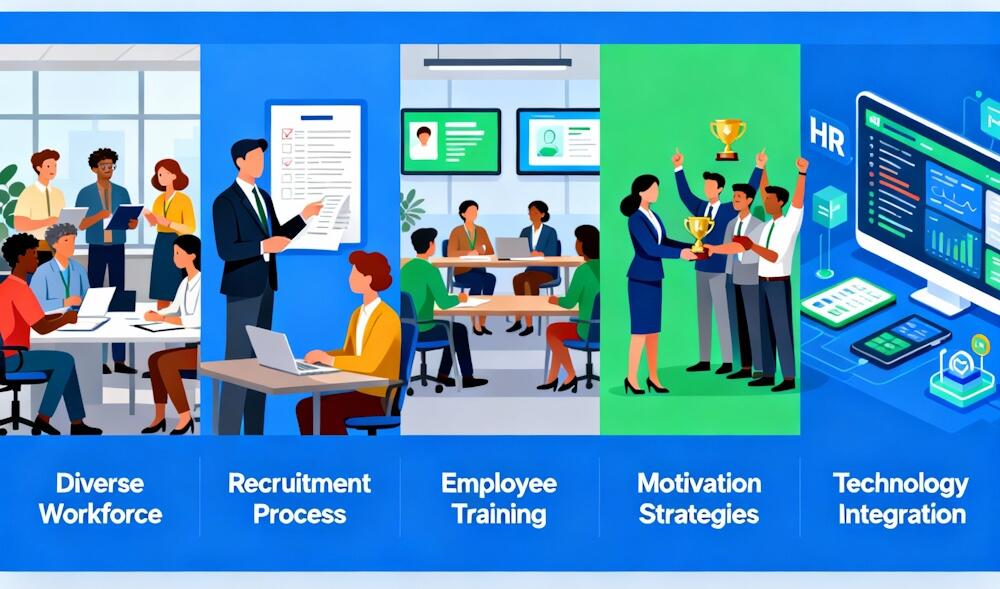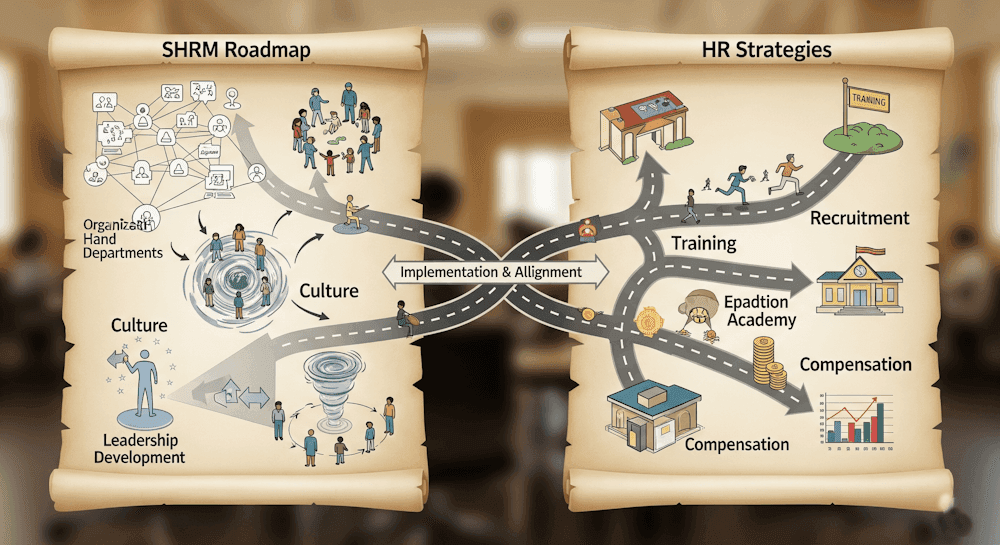Strategic Human Resource Management, or SHRM, is all about aligning HR with business strategy. Over time, experts have come up with several models to show how this works in real companies. Each one looks at HR from a different angle, and there’s no single “correct” approach. Instead, businesses choose what fits best based on their goals.
Let’s walk through the five most common SHRM models—and then look at the behavioral approach that connects HR actions with employee behavior.
The Five Main Theories of SHRM
1. Universalistic Approach
This model suggests that certain HR practices work well everywhere. Researchers John Delery and Harold Doty say companies can benefit from following a set of “best” HR methods.
These include:
- Offering job security
- Hiring selectively
- Encouraging teamwork
- Letting employees make decisions
- Paying well
- Providing regular training
The idea? If you do these things, performance should improve—regardless of your industry.
2. Strategic Fit Model
This approach says HR should line up with a company’s broader goals. If a business is focusing on innovation, cost savings, or customer service, its HR plan should support that focus.
- External fit: Matching HR practices to outside market conditions
- Internal fit: Making sure HR supports the company’s internal goals
It’s not about using the “best” practices, but the right ones for your situation.
3. HR as an Internal Service Provider
Here, HR’s job is to support different teams inside the company. They act like an internal partner, helping departments run better by solving HR-related problems and offering useful tools.
4. Configurational Approach
This model says it’s not one policy that makes a difference—but how several work together. A strong HR system is made up of connected policies that support each other and match the company’s strategy.
It’s like building a puzzle: each HR piece should fit well with the others.
5. Resource-Based View (RBV)
In this model, people are seen as a company’s biggest strength. It says that a smart, skilled, and unique workforce is hard for competitors to copy. So, if you invest in your team the right way, you can stand out in your industry.
A strong workforce becomes a long-term advantage.

2. The Behavioral Perspective of SHRM
This approach looks at how employees behave—and how those behaviors impact the business. It’s not just about hiring the right people, but making sure their actions support company goals.
Let’s say your company wants to lead in innovation. That means you need employees who are creative, open to risk, and good at working together. HR’s role is to encourage and reinforce those behaviors through policies, culture, and leadership.
Core Ideas of the Behavioral Approach:
- Focuses on what employees do, not just what they know
- Behaviors change depending on the company's needs
- Good behavior leads to better performance
- Outside factors, like company culture or leadership, shape how people act
- HR policies should support and guide helpful behavior
- Practices should back up the behaviors the company wants to see
Why This Approach Stands Out
One big benefit is that it links strategy with people’s actions. Before this, HR studies focused on individuals, and business strategy focused on leadership. The behavioral approach connects both.
It also helps companies:
- Design HR systems based on goals (like innovation or efficiency)
- Predict how behaviors will change across industries
- Shape the culture in a more intentional way
For example, companies focused on cost-cutting might encourage efficiency and structure, while those focused on creativity would promote freedom and collaboration.
Real-World Use
Researchers have used the behavioral model to study hundreds of companies. They found that businesses who built their HR systems around behavior—rather than just skills or job titles—had better long-term results. This shows that aligning HR with behavior really works.
Even though the behavioral perspective isn’t a full theory on its own, it’s a helpful way to guide both academic research and HR practice in the real world.
Wrapping Up: What’s the Best SHRM Model?
The truth is, there’s no one-size-fits-all answer. Each company has to choose the approach—or mix of approaches—that fits its goals.
To recap:
- The Universalistic approach offers general best practices
- Strategic fit aligns HR with business goals
- The service provider model puts HR in a supporting role
- Configurational thinking bundles HR practices together
- RBV focuses on people as a unique competitive edge
- And the behavioural approach links all of them to what employees actually do
By choosing the right mix, companies can build a workforce that drives real results.







